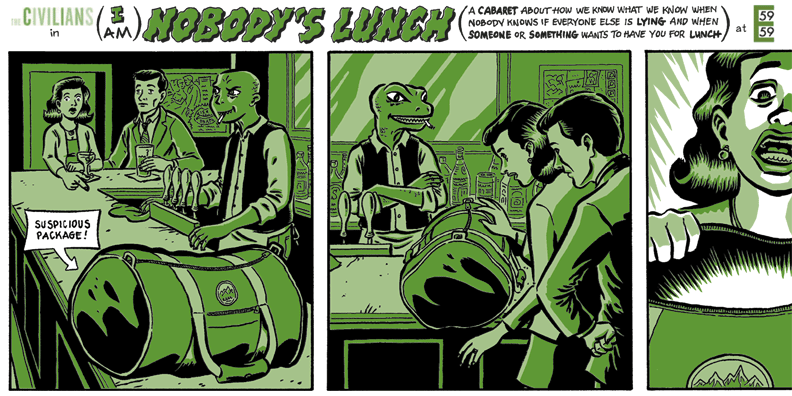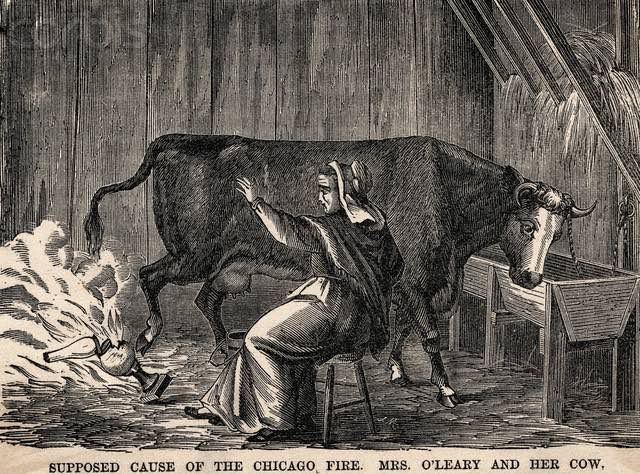The beginning of a reckoning with inclusivity is underway in American theater. But how can it be inclusive if it is not accessible? For many theatermakers, accessible theater for neurodiverse populations largely focuses on sensory-friendly or relaxed performances. For others, it encompasses taking on a much wider range of issues from the lack of representation and nuance in neurodivergent characters to addressing the ways in which casting rooms and rehearsal processes can be uncomfortable and hostile environments lacking in neurodivergent creatives and administrators. Accessibility applies to more than the audiences; it applies to the stories told and who is telling them, too. It raises questions about what accessibility is, how to actually engage in the work of making theater accessible, and the relationship between accessibility and the centering of neurodivergent artists and audiences.
I spoke with Cortland Nesley, The Civilians’ neurodiversity consultant and part of the creative team behind Black Feminist Video Game. In our conversation, Cortland detailed that “we often think of accessibility in a logistic-focused way. We think of it as merely a series of checkboxes to be ticked off…but accessibility is about so much more than that. Accessibility, at its core, is an intimate act. Accessibility is about communication, relationship building, and making someone feel seen.” This level of accessibility moves away from a one-directional servicing to a two-directional engagement that derives from active collaboration and community-building; it moves towards a re-centering of theater practices. As Cortland said “simply making your space engageable to Neurodivergent folk does not necessarily constitute a centering…it is at this level of accessibility where centering really starts to happen.”
One theater company well known for its work in creating theater accessible to and inclusive of neurodivergent people is EPIC Players based in Brooklyn. Aubrie Therrien, Executive Artistic Director, has said that their process begins with the question “what do you need?” This seemingly simple question starts from a place that creates a model beginning with the artist rather than creating a model that requires modifying accommodations or asks artists to modify themselves. There are other theater companies centering neurodivergent artists and audiences spread throughout the region. Spectrum Theatre Ensemble is a company of neurodiverse artists based in Providence, Rhode Island. CO/LAB is a non-profit theater collective initiative based in New York that works with members and class attendees to write, produce, and perform. DreamStreet in Brooklyn provides education, workshops, and other resources in addition to putting on performances. Bluelaces Theater co-based in New York designs theater specifically for neurodivergent audiences, as does Trusty Sidekick who works with Lincoln Center to design multi-sensory work for audiences on the autism spectrum. The goal for many of these theater companies is for their practices of accessibility and inclusivity to become the standard across all theater. In “The Importance of Centering Neurodivergent and Mad Writers,” Cortland Nesley wrote about some of these companies and expressed that “perhaps what is most powerful about these examples is that they are community focused, leveraging the power of shared knowledge…these groups move away from a model of service towards one of community. Theatre too often frames its interactions with Neurodivergent and Mad communities as an act of service.”
This move towards a model of community was at the core of the process behind Black Feminist Video Game. In speaking with Cortland, he provided a view into how the production engaged in accessibility in a way that began at its core and spread to its audience. “There were a plethora of neurodivergent voices working on this production and each provided insights into how this text can be its most authentically neurodivergent self. This means when choices were made regarding accessibility measures in the piece, the level of sensory input in the production, notes in the script, were all made from a core of lived experience. The script was even conceptualized by listening to someone from the Autistic community. This may all sound insular, but its effects protrude outward.” In its experimental use of the digital landscape, Black Feminist Vide Game worked towards accessibility in its process through the multiple ways that Cortland spoke about, communication, community, recognition, and utilized platforms that open up access even further. As Cortland further explained, “to center a neurodivergent audience is to not fear that your measures of accessibility (in the most intimate sense of the word) might make a neurotypical audience feel uncomfortable. From my perspective working with the Black Feminist Video Game team, there was no hesitancy regarding these measures.”
Spreading such practices requires collaboration and engaging with these communities. As Jenna Worsham, director of the 2018 Off-Broadway premiere of AGNES, said “We wanted to make theatre not just for a community, but with a community, which I believe is an important distinction in activism art.” Amongst the cast and creative team of the production were neurodivergent theatermakers who discussed their experiences anonymously from the stigmatization they wanted to avoid to the kinds of difficult and open conversations that have been part of the process of breaking down theater’s ableist and neurotypical barriers. They also discuss how their neurodivergence can be an asset to their work, an act of reclaiming which has been at the heart of several articles by neurodivergent people. Actor Mickey Rowe wrote from a similar perspective in “Our Differences are Our Strengths: Neurodiversity in Theatre” and drew an incredible line between his work and the nature of theater as a whole. “There is a tension,” he said, “between everything that I am and everything that might be conventional for an actor. This is the same tension that makes incredible theatre. No one wants to see something if it is too comfortable. Every performance should have a tension between what feels easy and what feels risky.”
This line of thinking connects with a different thread of conversation about neurodivergent people having access to theater: “relaxed” or “sensory-friendly” performances. There are benefits to “relaxed” or “sensory-friendly” performances for audience members who need the freedom from neurotypical audience policing or production modifications, but not all neurodivergent people wish to or need to attend those performances. For some, knowing ahead of time what to expect at an unmodified show is preferred. These are choices neurodiverse audiences have to make when deciding to go to the theater and it becomes more complicated when one actually digs into what theaters offer such performances, what genres of shows, and how many times a season such performances are actually offered. For instance, before the shutdown, TDF Broadway offers six performances a season mainly of their family-friendly shows; New York City’s Atlantic Theater offers four “relaxed” performances a season with two meant for children, one for public school groups, and one for the general public. For all the horror, loss, and grief which we have collectively experienced during this pandemic, one of the things it has shown us is that the boundaries of what theater can do to become more accessible are only placed where our imagination or our commitment ends.
As theater moved into the digital space in search of a solution to connect with audiences and keep afloat, theater exploded in its experimentation with virtual storytelling. From Zoom theater to text to podcast plays, every technological tool available became a suddenly necessary and exciting possibility. Brooklyn-based theater artist Allie Marotta wrote “No one could get to the theatre, so the only option was to bring the theatre to the audience, instantaneously solving a problem disabled communities have been asking to be addressed for decades.” While Marotta does acknowledge that virtual theater does not solve every accessibility problem, she writes that “incorporating both virtual and in-person options could be an answer to broadening the scope of access in the theatre industry as a whole.”
The digital theater of the past fourteen months has highlighted that theater is not incapable of expanding. “[This pandemic] has revealed to us that the way we used to think about the world was insufficient,” Cortland Nesley said. “So many folk who couldn’t access certain spaces (Disabled, Neurodivergent, Mad, chronically ill) suddenly had access to them via a digital form.” He goes on to consider not only how we can rethink theater but how we can rethink the ways we think about ourselves, that we need to reconfigure how we think about the relationship between bodies and space. “In a Donna Haraway-esque way, the pandemic has made cyborgs of us all and is challenging our arbitrary (and often ableist) divisions between body and mind. So, when we ask questions about how these digital spaces operate, I think it is important to not only consider how they work in juxtaposition to our pre-pandemic “normal” but also what expansive possibilities they provide for our notions of neurodivergence.” He connects digital performance with providing potential freedoms available to audiences by “breaking the assumed (and abled) relationship between body and space.” But, “this is not to say that nothing is lost in the digital space.”
This ultimately leads to other questions. What happens when we reexamine what theater expects and demands of its audiences? Why not throw out the so-called “etiquette” which expects theatergoers to sit like stone and remain completely silent? In her thought-provoking article “Tics in the Theatre: The ‘Quiet Audience’ and the Neurodiverse Spectator,” Hannah Simpson traces the history of audience etiquette, tracking the noise, movement, and engagement of audiences of Ancient Greek drama to Japanese Noh to Shakespeare. She finds that “only since the mid-twentieth century has the policing of audience noise become commonplace. The earliest theatre forms were ritual-based, not merely tolerating but demanding audience participation.” And in fact, the policing of audiences within the UK began around World War II as younger and more working-class populations began attending the theater which had become more accessible through changes to curtain times and ticket prices. In the wake of more diverse audiences, the veteran elite that had previously dominated the space pushed for rules of etiquette meant to quell generational and class fears. In effect, according to Simpson, “the modern theatre audience have become Michel Foucault’s docile bodies, regulated under their own surveillance” and the “zealous policing of audience noise, out of respect for actors and fellow patrons, too easily slips into self-righteous discrimination.”
Maddy Costa addressed the same issue from a different perspective in her article “It’s time for audiences to be less uptight” for The Guardian. Both Simpson and Costa consider the political and individual implications of their arguments and Costa’s statement that “for an art form so dedicated to thinking about human behaviour and interaction, theatre is remarkably bad at allowing its audiences to be human beings once they take their seats” captures a sentiment that underlies both articles. Costa goes on to say about the policing of audiences that “none of this is what theatre should be – and at the root of the problem is the expectation that people in an auditorium should be homogeneous, conforming and undifferentiated, so as not to distract either the performers or each other. But the whole point of theatre is that disruption should be possible: that’s what it means to be live.” How exciting could it be for all theatergoers to experience that tension that Rowe outlines because we are renegotiating the relationship between performer and audience? When performances happen live (particularly in-person) what might be possible if we embrace exactly what being live means as Costa says?
These possibilities to explore come in the wake of a transformative time for theater with desires and anxieties at the forefront as the theaters reopen for in-person performances. Cortland Nesley shared some of his fears with me. “My more pressing concern is that once we return to in-person theater, we will lose every lesson we’ve gathered this past year. I can feel a sense of wanting to return to a previous ‘normal,’ but it comes with little engagement as to the ways in which that previous normal was broken.” And as always, what will happen when these possibilities explored over the past year “are no longer economically viable.” Hope remains though. Excitement about what we have collectively learned and what we can potentially do grows. “What happens,” he asked, “if people can proverbially ‘turn off their cameras’ in a space? What happens if they can freely roam? Freely stim?” If we embraced instead of policed, would that not be a delightful and radical subversion? And he also shares that “if we embrace a neuroqueering of our spaces we can unlock possibilities for performance we never could have before.” Cortland draws a line between the problematic medical model of neurodivergence with the current standard of relationship between performer and audience, explaining that “the doctor-patient relationship is constructed as one-directional. The sane neurotypical authority wields its power tyrannically over the Neurodivgent/Mad subject. The relationship between performer and audience is similarly positioned. An audience is positioned to be a passive subject, which runs antithetically to the condition of being bodyminds in the same space as the performers.” So, what happens when we restructure the relationship? As Cortland said, “what if the relationship between audience and performer is not dictated, but negotiated? What if we discouraged one-directional judgments and instead embraced two-directional dialogue? What could that do to our story structures? What exciting new possibilities could that new sensibility hold?” The joy of these questions is that they build towards accessibility with thinking aimed at pushing the boundaries of theater forward, of finding new and potentially rewarding risks to the benefit of neurodivergent and neurotypical artists and audiences. We are bounded only by the limits of our imagination and our commitment.
Author
-

Leah Putnam (she/her) is a dramaturg from outside of Philadelphia, Pennsylvania. Prior to joining The Civilians, she worked as a dramaturg for Live Arts in Charlottesville, Virginia and has worked on developing new work with writers including LET GO OF ME by Kelley Van Dilla. She is particularly passionate about immersive theater and also has a background in costumes. Leah completed her MA in English at UVA and her BA in English at NYU.










